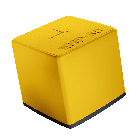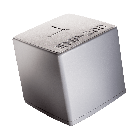Simulation Software EFC-400
Computation of low frequency electric and magnetic fields
SKU
EFC400SS

Simulation Software EFC-400 Overview
EFC-400 calculates electromagnetic fields using a practically unlimited number of network elements such as conductors, line segments, buildings, and antennas. The software features fast computing speed, ease of use, and efficiency. Users can create all the needed network elements themselves or import them. The software puts all the elements together with the simulation result in an easily interpreted graphic display.
EFC-400 has been the quasi standard for the industry since 1995, with references from clients worldwide. Users include energy network operators and their planning departments, consulting engineers, railroad companies, regulatory authorities and the environmental departments of local government agencies.
EFC-400 was originally developed for determining field exposure levels caused by power supply equipment (overhead lines, transformer and switching stations) - including noise emissions and RF interference levels due to corona discharge.
The EFC-400 Telecommunication is a separate module for computing the radiation exposure due to transmitters and telecommunications equipment emitting high frequency radiation.
For more information on the Simulation Software EFC-400, contact your local Air-Met office.
Simulation Software EFC-400 Features
- Industry standard for low frequency simulation since 1995
- Maximum strength performance from calculation speed, ease of use, and the practically unlimited number of network elements
- Maximum cost-effectiveness in use, as users can create and import the necessary network elements themselves
- Principal users: Energy suppliers and their planning departments, consulting engineers, railroad companies and network regulation authorities
- Import and interpolation of measurement data
- All network elements are visible: 3D display ? “What you see is what you get”
Simulation Software EFC-400 Specifications
| Magnetic Field Computation |
|
| Geometric Objects |
|
| Computation Types |
|
| Object Editing |
|
| Data Display |
|
| Support for Power Supply Lines |
|
| Integrated Tools |
|
|
Computation of Electric Field
|
|
| System Requirements |
|
| Performance |
|
| Data Interface |
|
Simulation Software EFC-400 Applications
- Construction planning
- Network upgrade planning
Simulation Software EFC-400 Support Documents
Narda EFC-400 Software Datasheet


